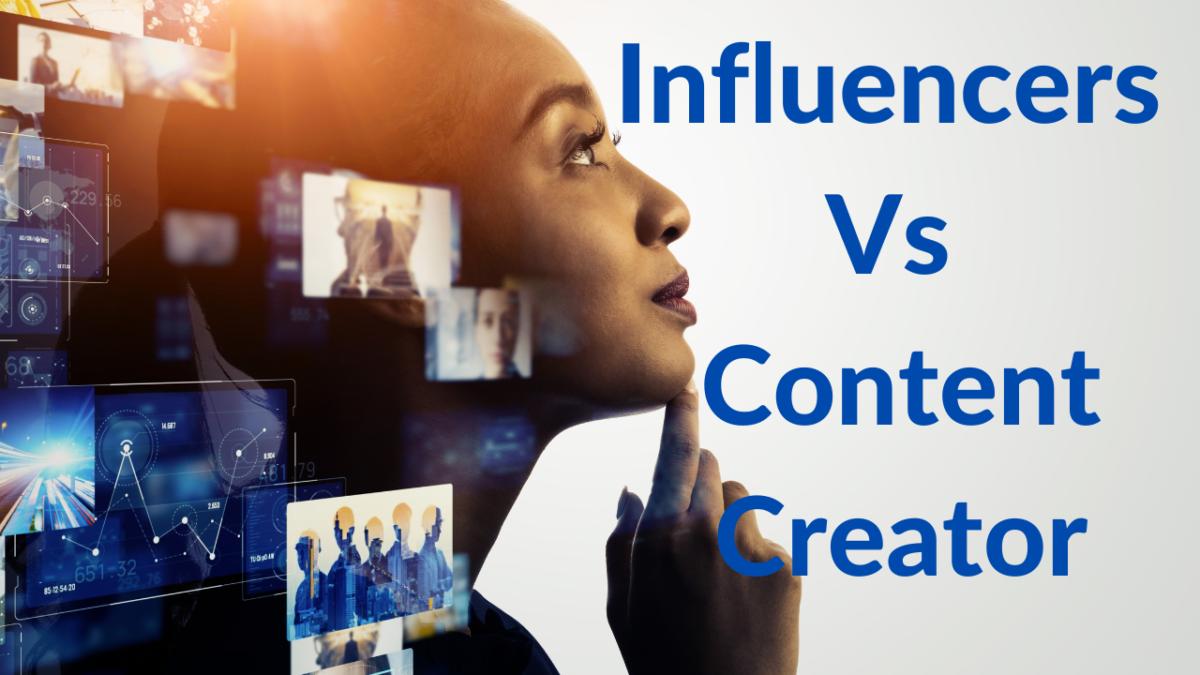In today’s digital age, social media has revolutionized the way brands advertise and connect with their audiences. The rise of influencer marketing and content creation has made it possible for businesses to reach their target market through popular social media platforms. However, there is a common misconception that influencers and content creators are the same, but in reality, they are two different entities. In this article, we will discuss the differences and similarities between influencers and content creators and how each of them plays a vital role in digital marketing.
1. Introduction
The terms influencer and content creator are often used interchangeably, but they represent two distinct groups of people. Both have a significant impact on digital marketing, but understanding the differences between the two is essential to maximize their potential. This article aims to provide a clear understanding of what makes an influencer different from a content creator.
2. What is an Influencer?
Defining Influencer
An influencer is a person who has a significant following on social media platforms, who can impact the purchasing decisions of their followers. Influencers can have a diverse range of followers, including lifestyle enthusiasts, fitness enthusiasts, beauty enthusiasts, etc.
Types of Influencersْ
Influencers can be categorized into four primary types:
Those who are nano influencers—those with fewer than 10,000 followers—
Micro Influencers – those with 10k to 50k followers
Macro Influencers – those with 50k to 1 million followers
Mega-influencers are those having a following of more than a million.
Importance of Influencers
The use of influencers in digital marketing is now crucial.Their influence on their followers allows businesses to reach their target audience more efficiently. Brands collaborate with influencers to promote their products or services to their followers, thus increasing brand awareness and driving sales.
3. What is a Content Creator?
Defining Content Creator
A content creator is a person who produces content for social media platforms or other digital mediums. They can create a variety of content, including videos, blog posts, social media posts, podcasts, etc.
Types of Content Creators
Content creators can be categorized into four primary types:
Videographers – those who create video content
Bloggers – those who write blog posts
Photographers – those who create visual content
Podcasters – those who create audio content
Importance of Content Creators
Digital marketers rely heavily on content developers. Their creativity and authenticity allow them to produce content that engages their audience, thus increasing brand awareness and driving sales.
4. Differences between Influencers and Content Creators
Primary Purpose
The primary purpose of an influencer is to influence the purchasing decisions of their followers. On the other hand, the primary purpose of a content creator is to create engaging content for their audience.
Audience
Influencers and content creators have different audiences. Influencers have a larger audience that they can influence, while content creators tend to have a smaller, more loyal following.
Engagement
Engagement is another significant difference between influencers and content creators. Influencers typically have a higher engagement rate than content creators. This is because their followers are more likely to engage with their content since they trust their opinion.
Compensation
Influencers and content creators are also compensated differently. Influencers typically receive compensation for promoting a product or service, while content creators are compensated for creating content. However, both can receive compensation in various forms, such as monetary payment or free products.
5. Similarities between Influencers and Content Creators
Creativity
Both influencers and content creators require a high level of creativity. Influencers need to be creative in how they promote products, while content creators need to be creative in the content they produce.
Authenticity
Authenticity is another similarity between influencers and content creators. Both need to be authentic in their content to maintain the trust of their audience.
Brand Collaboration
Both influencers and content creators collaborate with brands to promote their products or services. This collaboration helps brands reach their target audience through the influencer’s or content creator’s unique style and voice.
6. Conclusion
While there are similarities between influencers and content creators, they serve different purposes in digital marketing. Influencers focus on promoting products or services to their larger audience, while content creators focus on creating engaging content for their smaller, loyal following. Both are essential to the success of digital marketing, and brands should carefully consider which one to collaborate with to reach their target audience effectively.
7. FAQs
Can someone be both an influencer and a content creator?
Yes, someone can be both an influencer and a content creator. However, the primary focus of their content may lean towards one or the other.
Do influencers and content creators always receive compensation?
No, not always. Compensation depends on the collaboration agreement between the influencer or content creator and the brand.
Can a brand collaborate with both influencers and content creators simultaneously?
Yes, a brand can collaborate with both influencers and content creators simultaneously to reach a broader audience and increase brand awareness.
Are micro-influencers or macro-influencers more effective for a brand’s marketing campaign?
Depending on the objectives and target market of the brand. Micro-influencers may be more effective for niche products or services, while macro-influencers may be more effective for reaching a larger, more general audience.
How do brands find the right influencers or content creators to collaborate with?
Brands can find the right influencers or content creators by researching their audience demographics, engagement rates, and previous collaborations to ensure they align with the brand’s goals and values.


